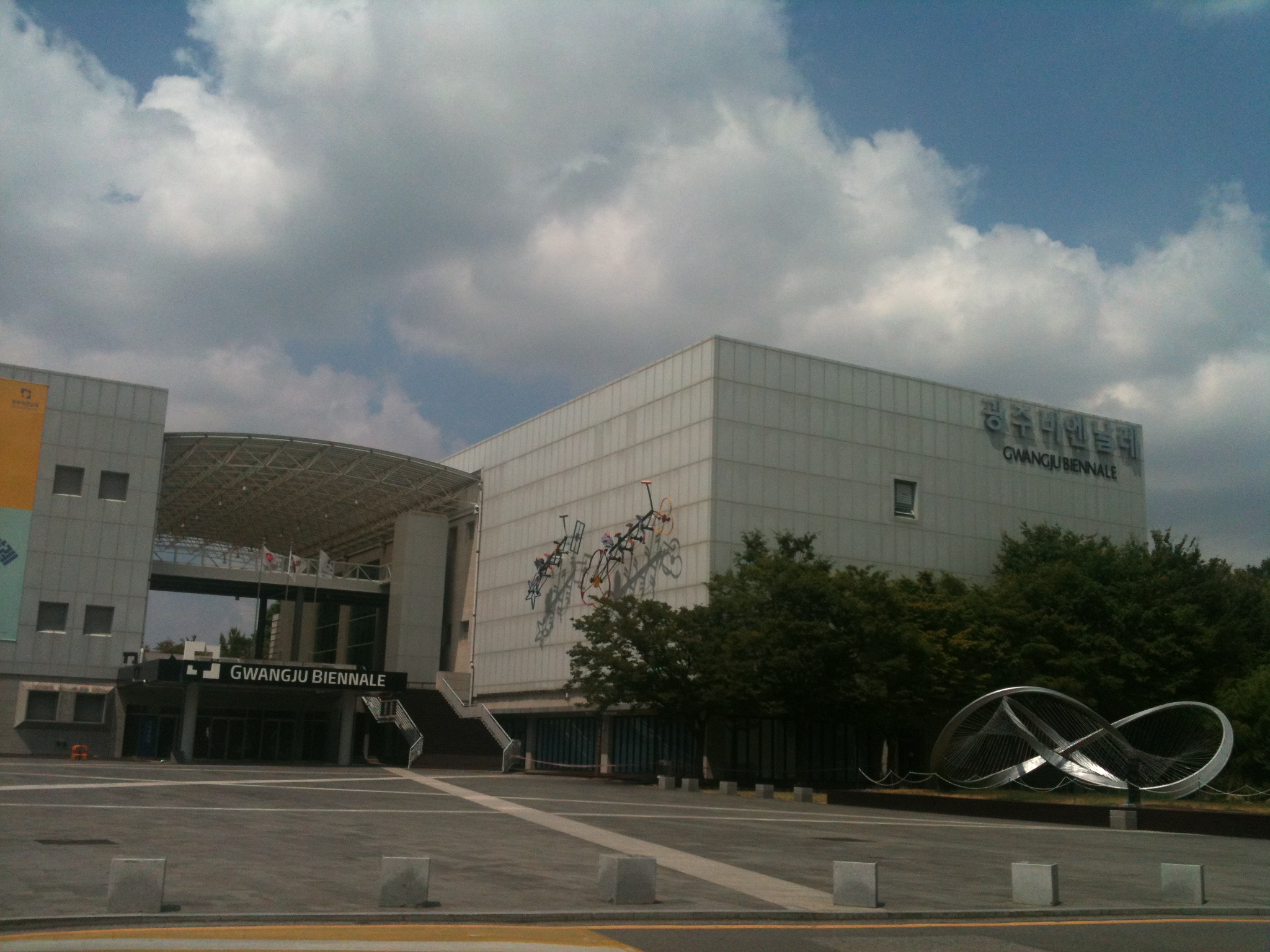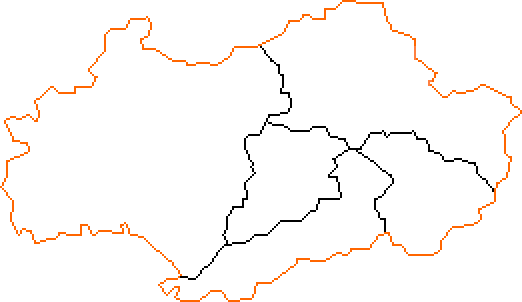|
Gwangju Biennale
The Gwangju Biennale is a contemporary art biennale founded in September 1995 in Gwangju, South Jeolla province, South Korea. The Gwangju Biennale is hosted by the Gwangju Biennale Foundation and the city of Gwangju. The Gwangju Biennale Foundation also hosts the Gwangju Design Biennale, founded in 2004. History * Beyond Borders: The 1st Gwangju Biennale, 20 September to 20 November 1995 * Unmapping the Earth: The 2nd Gwangju Biennale, 1 September to 27 November 1997 * Man and Space: The 3rd Gwangju Biennale, 29 March to 7 June 2000 * P_A_U_S_E: The 4th Gwangju Biennale, 29 March - 29 June 2002 * A Grain of Dust A Drop of Water: The 5th Gwangju Biennale, 8th Sept to 11 Nov 2004 * Fever Variations: The 6th Gwangju Biennale, 8 September to 11 November 2006 * On the Road / Position Papers / Insertions: The 7th Gwangju Biennale, 5th Sept to 9 Nov 2008 * 10,000 LIVES: The 8th Gwangju Biennale, 3 September to 7 November 2010 * ROUNDTABLE: The 9th Gwangju Biennale, 7 September to 11 N ... [...More Info...] [...Related Items...] OR: [Wikipedia] [Google] [Baidu] |
Gwangju Biennale Exhibition
Gwangju () is South Korea's sixth-largest metropolis. It is a designated metropolitan city under the direct control of the central government's Home Minister. The city was also the capital of South Jeolla Province until the provincial office moved to the southern village of Namak in Muan County in 2005 because Gwangju was promoted to a metropolitan city and was independent of South Jeolla province. Its name is composed of the words ''Gwang'' () meaning "light" and ''Ju'' () meaning "province". Gwangju was historically recorded as ''Muju'' (), in which "Silla merged all of the land to establish the provinces of Gwangju, Ungju, Jeonju, Muju and various counties, plus the southern boundary of Goguryeo and the ancient territories of Silla" in the ''Samguk Sagi.'' In the heart of the agricultural Jeolla region, the city is also famous for its rich and diverse cuisine. History The city was established in 57 BC. It was one of the administrative centers of Baekje during the Three ... [...More Info...] [...Related Items...] OR: [Wikipedia] [Google] [Baidu] |
Contemporary Art
Contemporary art is the art of today, produced in the second half of the 20th century or in the 21st century. Contemporary artists work in a globally influenced, culturally diverse, and technologically advancing world. Their art is a dynamic combination of materials, methods, concepts, and subjects that continue the challenging of boundaries that was already well underway in the 20th century. Diverse and eclectic, contemporary art as a whole is distinguished by the very lack of a uniform, organising principle, ideology, or " -ism". Contemporary art is part of a cultural dialogue that concerns larger contextual frameworks such as personal and cultural identity, family, community, and nationality. In vernacular English, ''modern'' and ''contemporary'' are synonyms, resulting in some conflation and confusion of the terms '' modern art'' and ''contemporary art'' by non-specialists. Scope Some define contemporary art as art produced within "our lifetime," recognising that lifetimes ... [...More Info...] [...Related Items...] OR: [Wikipedia] [Google] [Baidu] |
Biennale
Biennale (), Italian for "biennial" or "every other year", is any event that happens every two years. It is most commonly used within the art world to describe large-scale international contemporary art exhibitions. As such the term was popularised by Venice Biennale, which was first held in 1895. Since the 1990s, the terms "biennale" and "biennial" have been interchangeably used in a more generic way - to signify a large-scale international survey show of contemporary art that recurs at regular intervals but not necessarily biannual (such as triennials, Documenta, Skulptur Projekte Münster). The phrase has also been used for other artistic events, such as the " Biennale de Paris", " Kochi-Muziris Biennale", Berlinale (for the Berlin International Film Festival) and Viennale (for Vienna's international film festival). Characteristics According to author Federica Martini, what is at stake in contemporary biennales is the diplomatic/international relations potential as wel ... [...More Info...] [...Related Items...] OR: [Wikipedia] [Google] [Baidu] |
Gwangju
Gwangju () is South Korea's sixth-largest metropolis. It is a designated metropolitan city under the direct control of the central government's Home Minister. The city was also the capital of South Jeolla Province until the provincial office moved to the southern village of Namak in Muan County in 2005 because Gwangju was promoted to a metropolitan city and was independent of South Jeolla province. Its name is composed of the words ''Gwang'' () meaning "light" and ''Ju'' () meaning "province". Gwangju was historically recorded as ''Muju'' (), in which "Silla merged all of the land to establish the provinces of Gwangju, Ungju, Jeonju, Muju and various counties, plus the southern boundary of Goguryeo and the ancient territories of Silla" in the '' Samguk Sagi.'' In the heart of the agricultural Jeolla region, the city is also famous for its rich and diverse cuisine. History The city was established in 57 BC. It was one of the administrative centers of Baekje during the ... [...More Info...] [...Related Items...] OR: [Wikipedia] [Google] [Baidu] |
South Jeolla
South Jeolla Province (; ''Jeollanam-do''; ), also known as Jeonnam, is a province of South Korea. South Jeolla has a population of 1,902,324 (2014) and has a geographic area of located in the Honam region at the southwestern tip of the Korean Peninsula. South Jeolla borders the provinces of North Jeolla to the north, South Gyeongsang to the northeast, and Jeju to the southwest in the Korea Strait. Muan County is the capital and Yeosu is the largest city of South Jeolla, with other major cities including Suncheon, Mokpo, and Gwangyang. Gwangju was the largest city of South Jeolla until becoming a Metropolitan City in 1986, and was the historic capital until the provincial government was relocated to the Muan County town of Namak in 2005. South Jeolla was established in 1896 from the province of Jeolla, one of the Eight Provinces of Korea, consisting of the southern half of its mainland territory and most outlying islands. Geography The province is part of the Honam re ... [...More Info...] [...Related Items...] OR: [Wikipedia] [Google] [Baidu] |
South Korea
South Korea, officially the Republic of Korea (ROK), is a country in East Asia, constituting the southern part of the Korean Peninsula and sharing a land border with North Korea. Its western border is formed by the Yellow Sea, while its eastern border is defined by the Sea of Japan. South Korea claims to be the sole legitimate government of the entire peninsula and adjacent islands. It has a population of 51.75 million, of which roughly half live in the Seoul Capital Area, the fourth most populous metropolitan area in the world. Other major cities include Incheon, Busan, and Daegu. The Korean Peninsula was inhabited as early as the Lower Paleolithic period. Its first kingdom was noted in Chinese records in the early 7th century BCE. Following the unification of the Three Kingdoms of Korea into Silla and Balhae in the late 7th century, Korea was ruled by the Goryeo dynasty (918–1392) and the Joseon dynasty (1392–1897). The succeeding Korean Empire (1897–1910) was an ... [...More Info...] [...Related Items...] OR: [Wikipedia] [Google] [Baidu] |
Fatoş Üstek
Fatoş Üstek, born 1980 in Ankara, is a London-based independent Turkish curator and writer, working internationally with large scale organizations, biennials and festivals, as well as commissioning in the public realm. In 2008 she received her MA in Contemporary Art Theory from Goldsmiths College London, after completing her BA in Mathematics at Bogazici University in Istanbul. Work In 2014, Üstek acted as Associate Curator for the 10th Gwangju Biennale in South Korea. subsequently, she curated the ''fig-2'' project, hosted by the Institute of Contemporary Art ICA in London in 2015. The series of 50 week-long exhibitions showed works by artists Laura Eldret, Charles Avery, Rebecca Birch, Annika Ström, Beth Collar, Allison Katz, Tom McCarthy, Shezad Dawood, Suzanne Treister, Lynn Marsh, Jacopo Miliani, Kathryn Elkin, Marjolijn Dijkman, Ben Judd, Karen Mirza, Oreet Ashery, Eva Grubinger, Melanie Manchot, Bruce McLean, Vesna Petresin, Young In Hong, and duo Wri ... [...More Info...] [...Related Items...] OR: [Wikipedia] [Google] [Baidu] |
Emiliano Valdes
Emilian or Emiliano may refer to: *Emilia (region of Italy), a region of northern Italy * Emilian of Cogolla, a Visigothic saint *Emilian dialects, spoken in Emilia, northern Italy *A Romanian male given name: **Emilian Bratu (1904–1991), chemical engineer **Emilian Dobrescu (born 1933), economist **Emilian Dolha (born 1979), footballer **Emilian Galaicu-Păun (born 1964), author and editor **Emilian Voiutschi (1850–1920), theologian and cleric **Emilian Zabara, sprint canoeist *A Romanian surname: ** Celine Emilian (1898–1983), sculptor **Cornelia Emilian (1840–1910), journalist and women's rights activist **Ștefan Emilian (1819–1899), mathematician and architect See also *Emiliana (other) *Emilia (other) Emilia may refer to: People * Emilia (given name), list of people with this name Places * Emilia (region), a historical region of Italy. Reggio, Emilia * Emilia-Romagna, an administrative region in Italy, including the historical regions of Emi ... [...More Info...] [...Related Items...] OR: [Wikipedia] [Google] [Baidu] |
Defne Ayas
Defne Ayas (born 1976) is a curator, educator, and publisher in the field of contemporary art and its institutions. Ayas directed and advised many institutions and collaborative platforms across the world, including in China, South Korea, United States, Netherlands, Russia, Lithuania and Italy. She is known for conceiving exhibition and biennale formats within diverse geographies, in each instance composing interdisciplinary frameworks that provide historical anchoring and engagement with local conditions. Until June 2021, Ayas was the Artistic Director of 2021 Gwangju Biennale, together with Natasha Ginwala. She was the director of the Witte de With Center for Contemporary Art in Rotterdam (2012-2017). Towards the end of her tenure in 2017, she announced that the institution had to change its name to dissociate itself from its namesake, the Dutch naval officer Witte Corneliszoon de With. The institution’s decision to change its name was immediately politicized, causing a flurry ... [...More Info...] [...Related Items...] OR: [Wikipedia] [Google] [Baidu] |
Natasha Ginwala
Natasha (russian: Наташа) is a name of Slavic origin. The Slavic name is the diminutive form of Natalia. Notable people * Natasha, the subject of '' Natasha's Story'', a 1994 nonfiction book * Natasha Aguilar (1970–2016), Costa Rican swimmer * Natasha Allegri (born 1986), American creator, writer, storyboard revisionist, and cartoonist * Natascha Artin Brunswick (1909–2003), German-American mathematician and photographer * Natasha Arthy (born 1969), Danish screenwriter, film director and producer * Natascha Badmann (born 1966), Swiss triathlete * Natasha Badhwar (born 1971), Indian author * Natasha Barrett (other), several people * Natasha Beaumont (born 1974), Malaysian-Australian actress * Natasha Bedingfield (born 1981), British singer * Natascha Bessez (born 1986), American singer * Natasha Bowen, Nigerian Welsh writer * Natasha J. Caplen, British-American geneticist * Natasha Chmyreva (born 1958), Russian tennis player * Natasha Chokljat (born 1979) ... [...More Info...] [...Related Items...] OR: [Wikipedia] [Google] [Baidu] |





